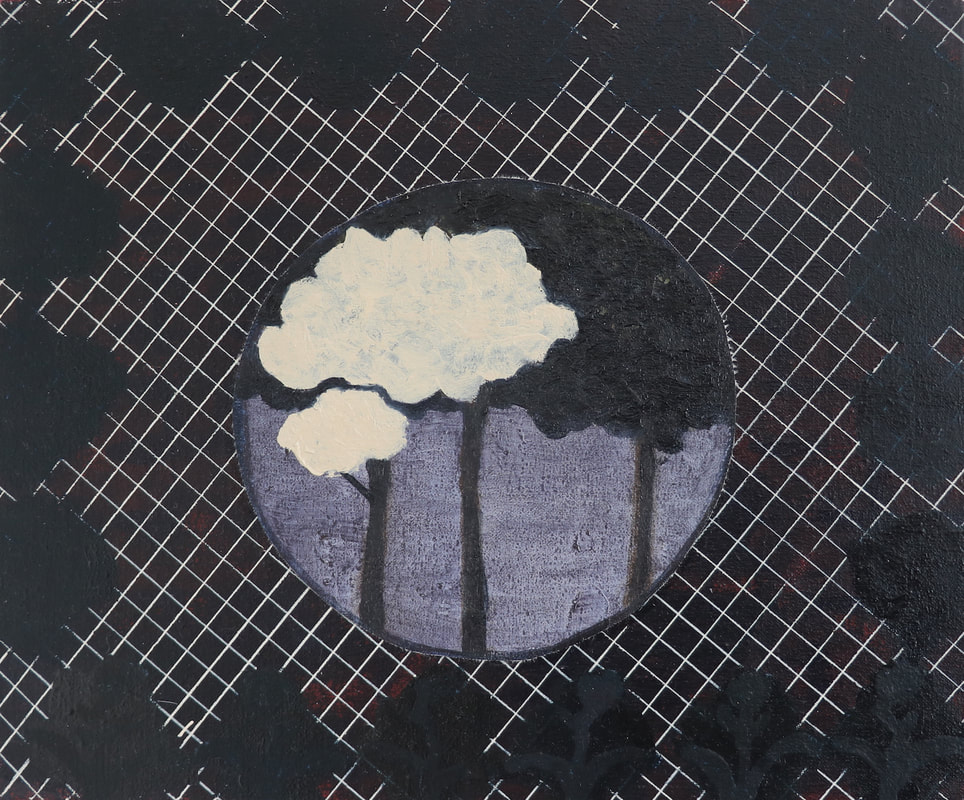Fiona Murray
www.fionnamurrayart.com
@fionnamurray
Statement:
Fionna Murray’s paintings often make reference to the park as an in-between place of respite within the tough complexity of the city. Growing up in London with Irish parents meant seeing Ireland from afar. Now from her current vantage point of Galway in the west of Ireland she reflects on London as a home that is past yet still endures, in sequences of lived time and lived places. The places are still there but, they are different now as they have become part of the imagination, and when re-visited they are not quite the same as the memories of them. Nothing has changed but everything has changed. So, what might be possible within the contained space of an imaginary park gives rise to speculation about what a contemporary pastoral might look like in terms of painting.
These paintings aren’t nostalgic, specific or scenic; rather, they suppose more than explain.
Through her investigations with form, colour, subtle shifts of scale and simply, what goes where, the canvas becomes a site to coax fictions into material reality; the resulting images are fragmentary and enigmatic - trees or is it a cloud viewed and magnified, an empty urn suddenly looks lonely on the flattened out picture plane. Pictures within pictures point to the intrinsic artificiality of painting - a ‘make-believe’ that negotiates the difference between what is real and what is painted.
The subject matter of the park serves as a framework for examining personal ambiguities concerning memory and displacement, whilst providing a filter through which the activity of painting might address the notion of an unlimited space to practice freedom.
www.fionnamurrayart.com
@fionnamurray
Statement:
Fionna Murray’s paintings often make reference to the park as an in-between place of respite within the tough complexity of the city. Growing up in London with Irish parents meant seeing Ireland from afar. Now from her current vantage point of Galway in the west of Ireland she reflects on London as a home that is past yet still endures, in sequences of lived time and lived places. The places are still there but, they are different now as they have become part of the imagination, and when re-visited they are not quite the same as the memories of them. Nothing has changed but everything has changed. So, what might be possible within the contained space of an imaginary park gives rise to speculation about what a contemporary pastoral might look like in terms of painting.
These paintings aren’t nostalgic, specific or scenic; rather, they suppose more than explain.
Through her investigations with form, colour, subtle shifts of scale and simply, what goes where, the canvas becomes a site to coax fictions into material reality; the resulting images are fragmentary and enigmatic - trees or is it a cloud viewed and magnified, an empty urn suddenly looks lonely on the flattened out picture plane. Pictures within pictures point to the intrinsic artificiality of painting - a ‘make-believe’ that negotiates the difference between what is real and what is painted.
The subject matter of the park serves as a framework for examining personal ambiguities concerning memory and displacement, whilst providing a filter through which the activity of painting might address the notion of an unlimited space to practice freedom.
Viewfinder
25 x 30cm
Acrylic and Oil on Canvas
2022
25 x 30cm
Acrylic and Oil on Canvas
2022
